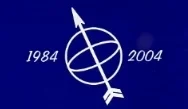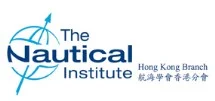Oct93
archive > Log > Log1993
Hong Kong
Tankers the future

CAPTAIN Sir William Codrington needed no introduction to the Branch members as he is Vice-Chairman and a long-serving committee member. In his professional capacity as senior port captain and safety officer for World-Wide Shipping Agency he is well qualified to comment on the current shipping scene.
Before commencing, and in fact during, his address members were shown a video film taken by the Korean master of a VLCC of the World-Wide fleet. The film showed the vessel proceeding at reduced speed in heavy weather off the South African coast. It was easy to see how some of the early tankers of this size (275,000 tons deadweight) stove in their bows during heavy weather. On this particular day the ship lost her forward liferaft as well as one of those stowed aft.
Commenting first on manning, Sir William emphasised that we must look forward and not back. When he first went to sea in a company which only employed British or Commonwealth officers but non-British ratings who only received on-the-job training there were a fair number of accidents. Tankers blew up or ran aground just as they do today. However, there was no television coverage then and the general public were not so concerned about their environment and so very little was said. Although many charterers still insist that the four senior officers shall be European or Japanese, this cannot last and indeed there is no reason why it should as there are many competent officers from elsewhere. The future may see an even greater mixing of nationalities among officers but it is important that they have a common language and a good knowledge of English. It is important, however, for the ratings to be of the same race or cultural group.
On the subject of ship surveys and inspections, it was the speaker's opinion that there are far too many of them, which tends to be demoralising for the crew as they get to feel that they are continually being watched. Surveyors are trained to find defects and rarely give praise when a ship passes a survey with flying colours. However, these inspections have done some good and so are here to stay for the forseeable future. It will be important to achieve more standardisation and less duplication of surveyor effort in the future.
With regard to OPA 90, it is felt that this has done some good if only to concentrate people's minds. It is a pity, however, that the Americans did not work through the IMO. The response plan idea gives a false sense of security. If the wind is blowing in the wrong direction then the ship and/or oil is going to blow ashore. No amount of skimmers will help. The present response plans are far too big and unwieldy. There is just too much to read and absorb. The best that a master can do is to carry out the monthly drill and hope that he can find the right page in an emergency. Too many individual American States are insisting on their own version of the response plan. For the future there must be more standardisation and simplification.
Another important problem that must be addressed is the poor relationship between ship and shore. For example, the new SBT tankers designed to replace the older type shown in the video film have got a higher freeboard at ballast draught. Many terminals cannot cope with this as their old Chicksans have not been modified. Thus these modem vessels have to put water in the cargo tanks so as to sink the vessel a bit more, which makes a complete mockery of Marpol. The age-old problem of getting rid of slops is still with us of course. Future enforcement of regulations must start ashore with port authorities and terminal operators.
In summing up, the speaker said that it is very difficult for any of us to forsee the future but what we do now can influence it. Good training and high operating standards will do more than anything else to benefit the industry.
Hong Kong pilotage consultancy
CAPTAIN Jan Kloos, of the Rotterdam Pilots Corporation, presented a provisional report on Hong Kong pilotage to a Branch meeting. The speaker, who is experienced in pilotage operations, heads a team containing a legal advisor, a marine engineer, an accountant, and a risk analysis expert to advise on VTS problems from a technical and managerial point of view.
The Rotterdam Pilots Consultancy was founded in 1988 with the aim of sharing their knowledge with others worldwide. They have also been called in to advise in Kuwait, India, Indonesia and Africa. The need for the present review and hence their presence in Hong Kong is due to the rapid increase in the number of vessels using the port and requiring pilotage services. There are large demands for reclaimed land which has led to the need for a planned port development. This in turn will affect the pattern and control of shipping movements. Thus the consultancy are reviewing the present pilotage system and will make recommendations for any changes necessary to meet the needs of the port for the period 1994 to 2011.
In comparing the two ports, it is of interest to note that Rotterdam handles approximately 32,000 seagoing vessels and 100,000 coastal vessels annually, whereas the figures for Hong Kong are 22,000 and 100,000, respectively, with rapid growth in full swing. Rotterdam port area is much larger than Hong Kong and so traffic is less congested there than in the busy waters of Hong Kong harbour.
The provision of pilotage services is becoming more critical with the focus on transport of dangerous goods and increasing public awareness of environmental issues. There is increasing tension between the economy and safety, and so government must take an increasing interest in the regulation of such services. There must be good relationship between all parties concerned: the pilots; the government; and the users (shipowners, masters and agents). Each party must recognise its obligations.
Captain Kloos outlined the various obligations that should be imposed on each of these parties at some length including the legal aspects. There is not the space here to go into this in detail but readers may be interested in the recommended new section of the Hong Kong Pilotage Ordinance which will be as follows:
1 . The Hong Kong Pilots association is the corporate body which has to ensure that ships will be provided with a licensed pilot within the usual period of time of an ETA or ETD report.
2. The Hong Kong Pilots Association with a view to execute its tasks has to ensure: the availability of a sufficient number of licensed pilots; the proportionate use of licensed pilots; the transport of licensed pilots to and from ships; the adequate training of pilots; and the collection of pilotage dues.
Contributed by Captain M. Pickthorne, MNI
Seaways October 1993

